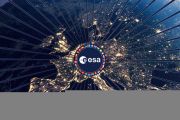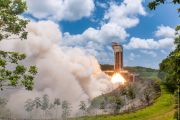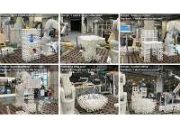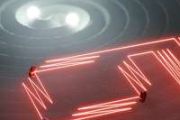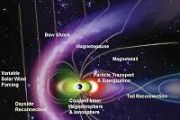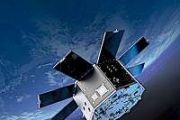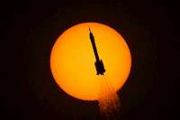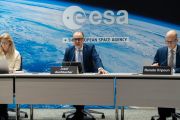
Copernical Team
Earth's oldest stromatolites and the search for life on Mars
 The earliest morphological traces of life on Earth are often highly controversial, both because non-biological processes can produce relatively similar structures and because such fossils have often been subjected to advanced alteration and metamorphism.
Stromatolites, layered organo-sedimentary structures reflecting complex interplays between microbial communities and their environment, h
The earliest morphological traces of life on Earth are often highly controversial, both because non-biological processes can produce relatively similar structures and because such fossils have often been subjected to advanced alteration and metamorphism.
Stromatolites, layered organo-sedimentary structures reflecting complex interplays between microbial communities and their environment, h NASA updates Commercial Crew Flight Manifest to Space Station
 NASA and its mission partners are gearing up for a busy 2023 with crew launches and returns from the International Space Station. NASA worked closely with its international partners and commercial crew providers, Boeing and SpaceX, to secure new target launch dates for the upcoming flights that are optimal for space station needs.
b>Starliner Flight Date Targets br> /b>
NASA and Boeing n
NASA and its mission partners are gearing up for a busy 2023 with crew launches and returns from the International Space Station. NASA worked closely with its international partners and commercial crew providers, Boeing and SpaceX, to secure new target launch dates for the upcoming flights that are optimal for space station needs.
b>Starliner Flight Date Targets br> /b>
NASA and Boeing n Cellbox-3 launches biomedical experiments to the ISS
 The uncrewed Cygnus spacecraft NG-18 is scheduled to launch from the Wallops Island spaceport in Virginia (USA) to the International Space Station (ISS) on 6 November 2022 at 11:50 CET (05:50 local time). Molecular biology experiments for biomedical research from Charite Berlin and Goethe University Frankfurt will be on board as part of the 'Cellbox-3' mission.
"With these experiments, the
The uncrewed Cygnus spacecraft NG-18 is scheduled to launch from the Wallops Island spaceport in Virginia (USA) to the International Space Station (ISS) on 6 November 2022 at 11:50 CET (05:50 local time). Molecular biology experiments for biomedical research from Charite Berlin and Goethe University Frankfurt will be on board as part of the 'Cellbox-3' mission.
"With these experiments, the PCX Aerosystems acquires Timken Aerospace Drive Systems
 PCX Aerostructures, a leading manufacturer of highly engineered, precision, Flight Critical aerospace components and complex assemblies for rotorcraft and fixed wing aerospace platforms, has completed the acquisition of Manchester, CT based Timken Aerospace Drive Systems (ADS), a proven source for aerospace transmission assemblies, gearboxes, Flight Critical components and overhaul and repair se
PCX Aerostructures, a leading manufacturer of highly engineered, precision, Flight Critical aerospace components and complex assemblies for rotorcraft and fixed wing aerospace platforms, has completed the acquisition of Manchester, CT based Timken Aerospace Drive Systems (ADS), a proven source for aerospace transmission assemblies, gearboxes, Flight Critical components and overhaul and repair se One Cygnus solar array deployed so far
 A Northrop Grumman Cygnus resupply spacecraft is on its way to the International Space Station with more than 8,200 pounds of science investigations and cargo after launching at 5:32 a.m. EST Monday from NASA's Wallops Flight Facility in Virginia.
NASA Television, the NASA app, and the agency's website will provide live coverage of the spacecraft's approach beginning at 3:30 a.m. Wednesday
A Northrop Grumman Cygnus resupply spacecraft is on its way to the International Space Station with more than 8,200 pounds of science investigations and cargo after launching at 5:32 a.m. EST Monday from NASA's Wallops Flight Facility in Virginia.
NASA Television, the NASA app, and the agency's website will provide live coverage of the spacecraft's approach beginning at 3:30 a.m. Wednesday First geostationary navigation receiver from Beyond Gravity will be sent to orbit
 Beyond Gravity (formerly RUAG Space) delivered a geostationary navigation receiver, called GEORIX, and an antenna to Maxar in 2021. The receiver precisely determines a satellite's position in orbit. Maxar installed GEORIX on Intelsat-40e, a geostationary communications satellite.
Intelsat-40e is hosting NASA's climate payload called Tropospheric Emissions Monitoring of Pollution (TEMPO). G
Beyond Gravity (formerly RUAG Space) delivered a geostationary navigation receiver, called GEORIX, and an antenna to Maxar in 2021. The receiver precisely determines a satellite's position in orbit. Maxar installed GEORIX on Intelsat-40e, a geostationary communications satellite.
Intelsat-40e is hosting NASA's climate payload called Tropospheric Emissions Monitoring of Pollution (TEMPO). G Phase Four achieves electric thruster operation on Air Force Green Propellant ASCENT
 Phase Four, the creator of the radio-frequency thruster (RF thruster) for satellite propulsion, has successfully demonstrated operation of its RF thruster using the Air Force Research Laboratory's green propellant, ASCENT (formerly AF-M315E). The achievement, made under a U.S. Space Force contract awarded at the 2021 Space Force Pitch Day, enables multi-mode propulsion capability, which combines
Phase Four, the creator of the radio-frequency thruster (RF thruster) for satellite propulsion, has successfully demonstrated operation of its RF thruster using the Air Force Research Laboratory's green propellant, ASCENT (formerly AF-M315E). The achievement, made under a U.S. Space Force contract awarded at the 2021 Space Force Pitch Day, enables multi-mode propulsion capability, which combines Gilmour Space completes final qualification test of Sirius rocket engine
 Australian rocket engineers at Gilmour Space Technologies have successfully completed the final qualification test of its main Sirius hybrid rocket engine, paving the way for the country's first orbital launch attempt of an Australian-made rocket next year.
The Queensland-based rocket company is developing Eris, a three-stage launch vehicle that will be a cost effective and greener alterna
Australian rocket engineers at Gilmour Space Technologies have successfully completed the final qualification test of its main Sirius hybrid rocket engine, paving the way for the country's first orbital launch attempt of an Australian-made rocket next year.
The Queensland-based rocket company is developing Eris, a three-stage launch vehicle that will be a cost effective and greener alterna Measuring sunlight from space, on a chip

For 40 years, people have used space-based sensors to measure the amount of light coming from the sun, which gives scientists insight into climate change on Earth.
Most of the energy powering Earth's climate system comes from sunlight. So, if scientists measure the energy hitting Earth from the sun, and also measure the energy leaving Earth, then they can determine how much energy remains behind.
Scientists measure the sunlight reaching Earth from space. The quantity they are measuring—called the "total solar irradiance" (TSI)—includes all the energy from all the different wavelengths of light coming out of the sun, from ultraviolet through visible and into infrared.
However, the devices currently being used to monitor the TSI are comparatively expensive to build and launch.
Solar panel trouble on cargo capsule bound for space station

A Northrop Grumman cargo capsule ran into trouble with a solar panel after Monday's liftoff to the International Space Station.
Only one of the two solar panels on the Cygnus capsule opened successfully following the predawn liftoff from Virginia.
Northrop Grumman officials assured NASA that there's enough power from the solar panel for Wednesday's planned space station rendezvous, but the space agency was still assessing the situation.
It's too early to know whether the capsule would be stable enough to be captured by the space station's robot arm, if the problem persists, said NASA's Dina Contella, a space station manager.
Northrop Grumman launched the capsule from coastal Wallops Island with more than 8,200 pounds of equipment and experiments, including brackets needed for upcoming spacewalks to upgrade the space station's power grid. It's dubbed the S.S. Sally Ride after the first American woman in space who died a decade ago.
The Virginia-based company has been sending shipments to the space station since 2013. There's been only one failure in its previous 18 supply runs, a launch explosion in 2014.
SpaceX is NASA's other contracted delivery service.










